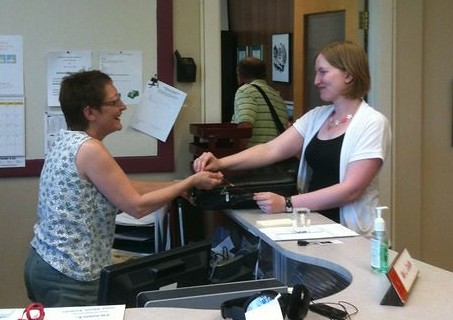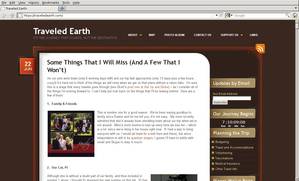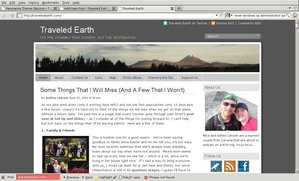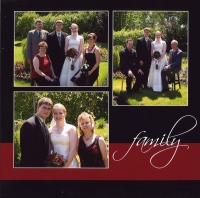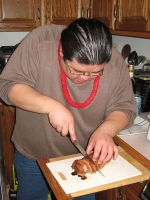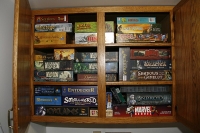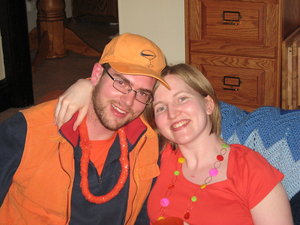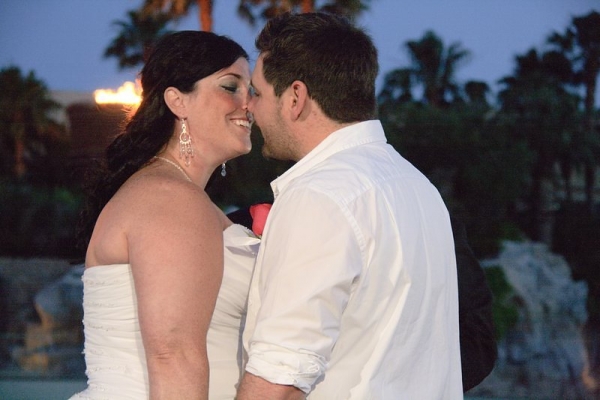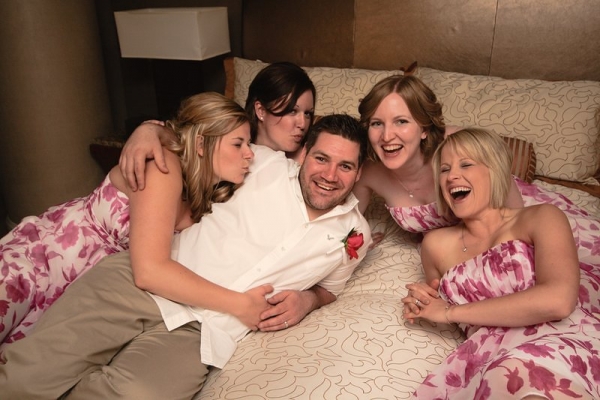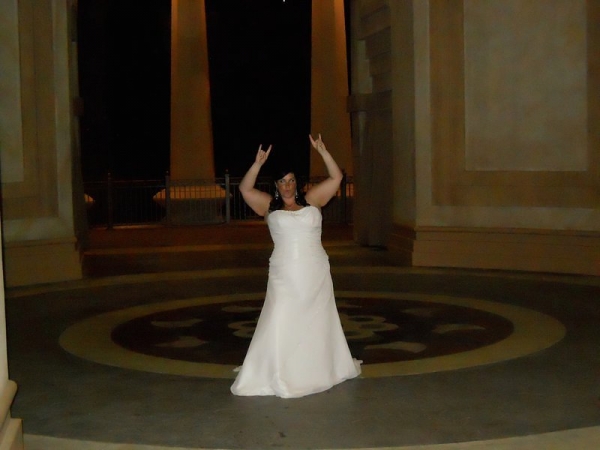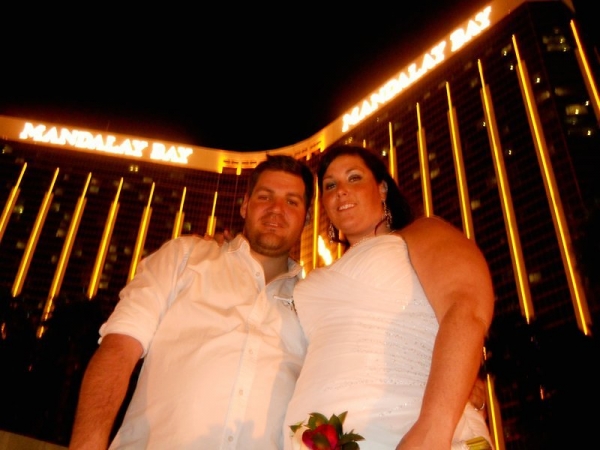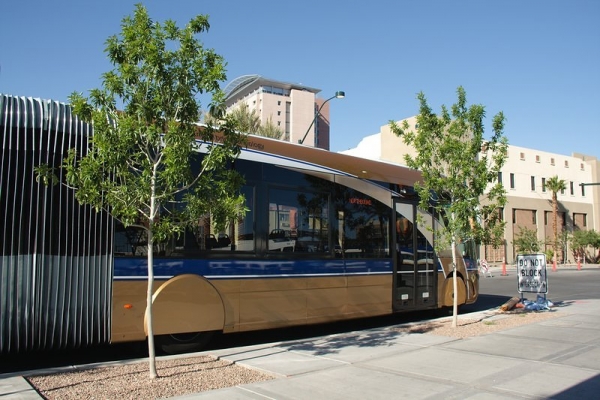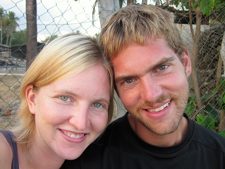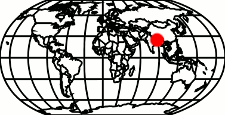Of all the decisions that had to be made for our RTW trip, choosing a backpack was the one that I agonized the most over. And I definitely took my sweet time deciding. After five trips to four different outdoor stores in three cities in two different countries, I chose the first one I put on… a green Osprey Kestrel 38 L. And what did Mike choose? A green Osprey Kestrel 38 L. That’s right… we are sporting matching backpacks! While this might seem a little too “cutesy” to you, it meant $40 in savings for us (totally worth it, and why does the same pack cost $40 more in Canada??).

Our New RTW Backpacks
I could go into the process of actually choosing a bag (fitting them, trying them on with weights, etc.) but you can find that information in a million places on the web. Instead, I’ll just explain why we chose the packs we did.
Mike and I showed up at each store with a list of needs and a list of wants for our backpacks. Interestingly enough, we ended up with packs that met all the requirements of the “needs” list and none of the “wants.” This is probably because we opted to sacrifice on convenience for comfort. A sacrifice that I’m sure we won’t regret as we spend 80 days walking through Europe with them on our backs.
Must-Haves:
- Under 40 L in Size – Mike and I already owned 55 L & 65 L packs and carried them around New Zealand for a month. They were fantastic, but too big! In New Zealand, we had a tent, sleeping bags, air mattresses, and a cook stove with fuel … none of which we will be carrying on this trip.
- Comfort & Proper Fit – These were the most critical features. If we are going to carry these packs for 80 days on the Via Francigena, they need to be comfortable. It turns out this meant adjustable torso harnesses (apparently neither of us are quite standard size) and adequate hip belts.
- Good Quality – The pack had to be well built. We want something that will last the entire duration of the trip (how ever long that will be…)
- Built-In Rain Cover – This might not be a must-have for most people, but after several hiking trips where Mike’s pack had a built-in rain cover and mine didn’t, this was non-negotiable. Built-in rain covers are quickly and easily accessible when the weather changes and take up less space in your pack.
Things That Would Be Nice To Have:
- Panel Access – We’ve always owned top loading bags, but we thought it might be more convenient to have panel access for the big trip. We quickly realized that we would need to ditch this idea if we wanted to stick with technical bags that met the <40L requirement. Packing cubes and stuff sacks will have to suffice to keep our stuff organized and quickly accessible.
- Travel Features – When I first starting looking at bags for our trip, I was intrigued by the features of some of the travel packs… things like zippered flaps to cover the straps for flights and built in wheels. We gave up on these as none of the technical backpacks seemed to have them.
- Back Ventilation – Since we are planning to walk about 20 km a day for 80 days through Europe, we thought that it might be nice to have some airflow between our backs and the packs. After trying on a few packs with the ventilation design, we decided that it wasn’t ideal… the curved shape of the frame meant the weight was centred too far away from your back, constantly pulling you over and throwing you off balance.
- Two Backpacks That Weren’t Identical – There are a lot of reasons to not buy the exact same pack as your traveling partner. For example, they don’t look ridiculously matchy as you walk side by side, and there is no confusion about whose pack is whose. However, the $40 in savings trumped them. The REI in Vegas only had one colour in stock. We could find more selection at home, but prices were $40 higher.
The Final Result:
Two happy RTW travelers, matching packs and all.
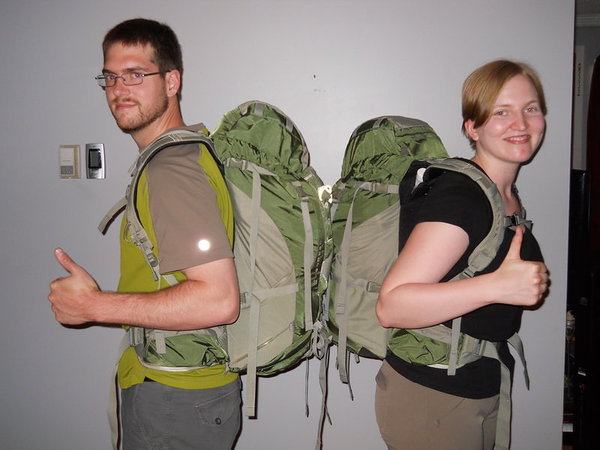
Loving Our New Osprey Kestrel 38L Packs
